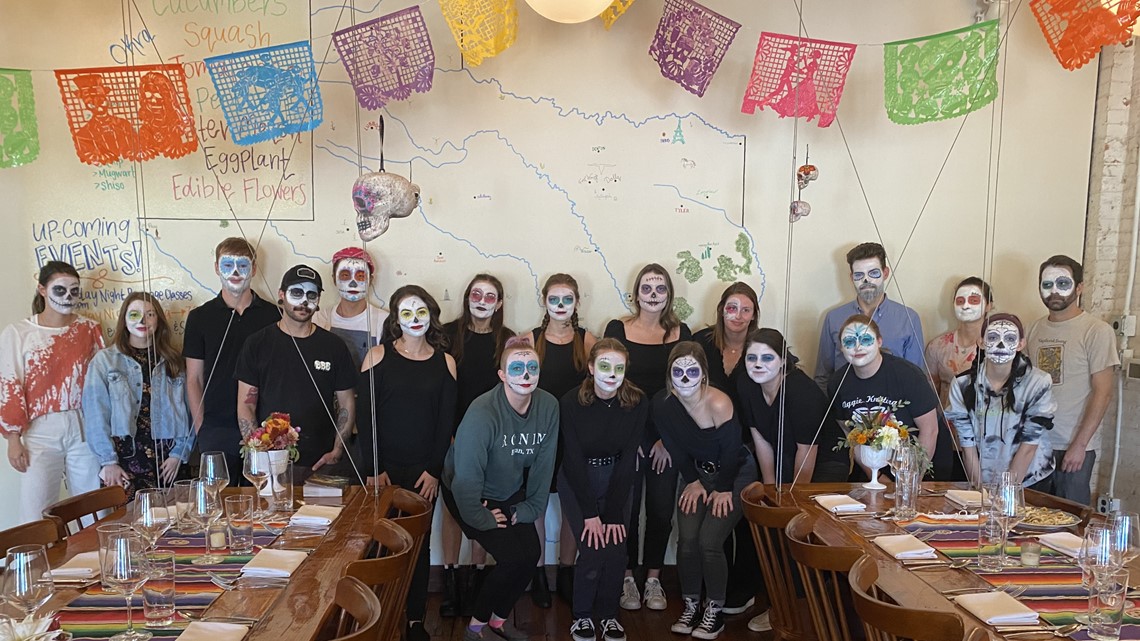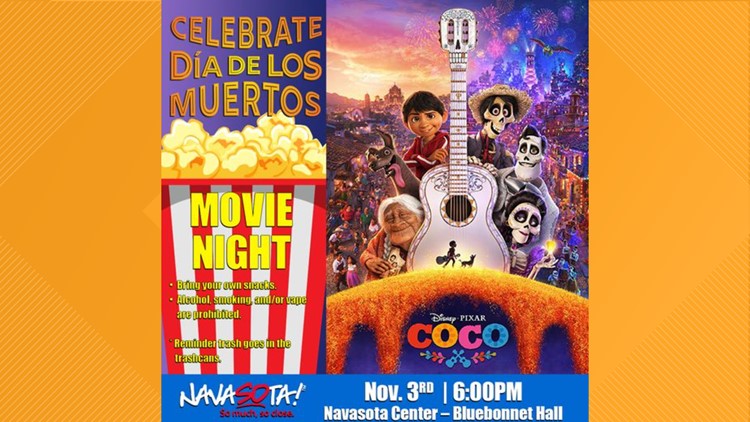NAVASOTA, Texas — Come celebrate el Dia de Muertos or Day of the Dead at the Navasota Center scheduled for 6 p.m. on Nov. 3.
The City of Navasota is hosting a movie night with a showing of Disney Pixar's COCO. Attendees can bring their own snacks to enjoy the free movie.
"Alcohol, smoking, and vape are prohibited," a post from the city's official Facebook page said.
The Day of the Dead — translated in Spanish as el Día de Muertos or el Día de los Muertos — is a holiday traditionally celebrated on Nov. 1 and 2, though other days, such as Oct. 31 or Nov. 6, may be included depending on the locality.
According to historians, the holiday is widely observed in Mexico, where it originated, and is also observed in other places, especially by people of Mexican heritage.
HOW DOES ONE CELEBRATE DIA DE MUERTOS?
Typically, it is an intimate family tradition observed in the home with altars or visits to local cemeteries to decorate graves with flowers and sugar skulls. They also bring their deceased loved ones' favorite food and play their favorite songs.
In Mexico, marigolds (also called cempasuchil, and known as the flower of the dead) decorate the streets as music blares from speakers. Adults and children alike dress as skeletons and take photos. It is believed that during the Day of the Dead they are able to communicate with their deceased loved ones through prayer and mediation.


According to VOANews Andrés Medina, a researcher at the Anthropological Research Institute of the National Autonomous University of Mexico said, "no one knows when the first observance took place, but it is rooted in agriculture-related beliefs from Mexico's pre-Hispanic era. Catholic traditions were incorporated into the celebration after the Spanish conquest in 1521."
"In that mythology, the corn is buried when it’s planted and leads an underground life for a period to later reappear as a plant," Medina said in the Oct. 31, 2022 article. 'The grain of corn is seen as a seed, comparable to a bone, which is seen as the origin of life.
Nowadays, skeletons are central to the celebrations, symbolizing the return of the bones to the living world.
Just like seeds planted under soil, the dead disappear temporarily only to return each year like the annual harvest.



